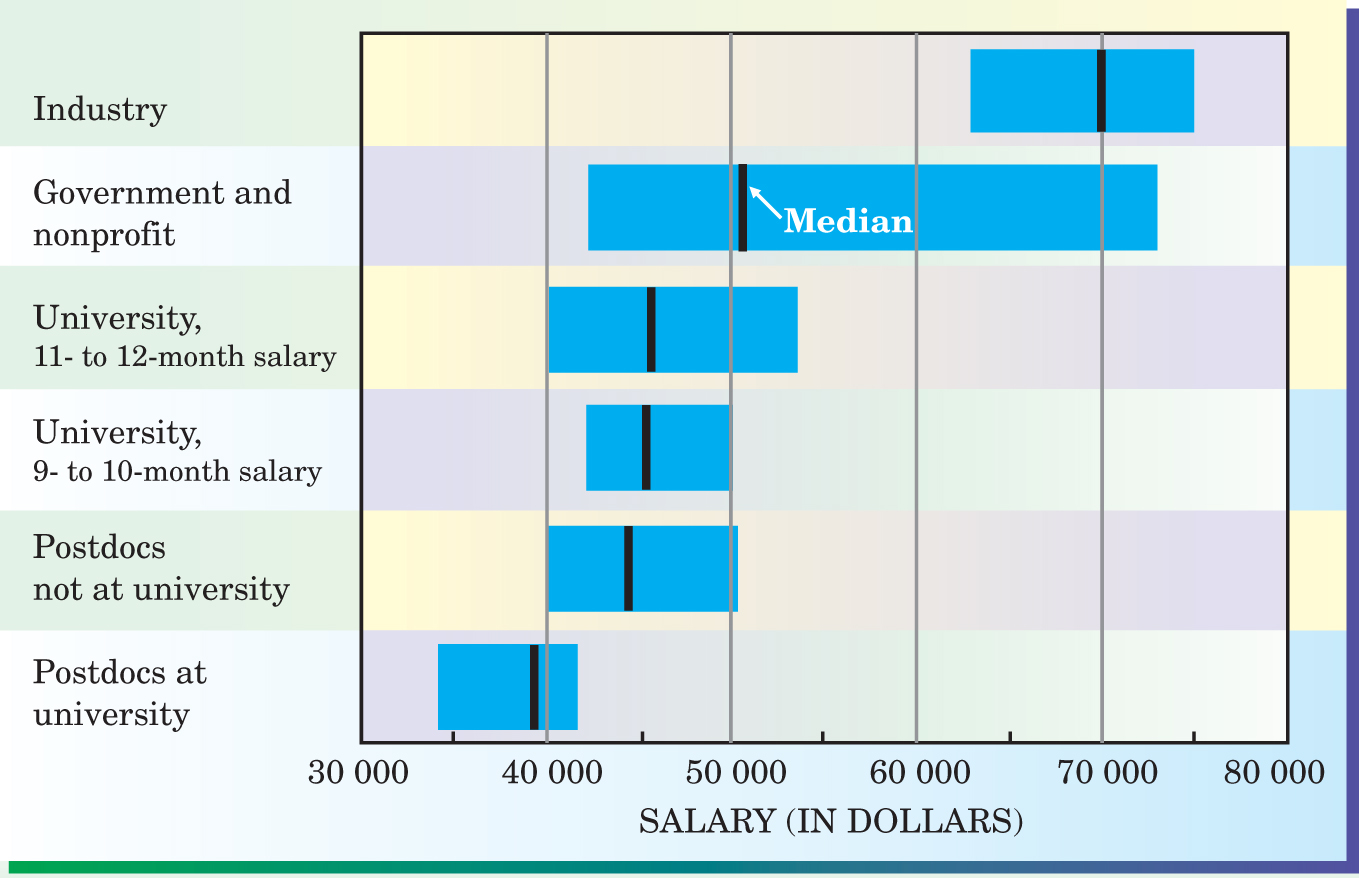Geoscience Job Market Good, but Perceived as Bad
DOI: 10.1063/1.1712496
The job market for recent PhDs in Earth and space sciences remained strong for the class of 2002: 88% are working in their field and describe their jobs as challenging and relevant, according to a recent report by the American Geological Institute, the American Geophysical Union, and the American Institute of Physics.
In 2002, 54% of new PhDs became postdocs, a slight increase over 49% from the previous year. The job hunt took a median of two months for postdocs and four months for nonpostdocs.
For PhDs working in academia, listings in newsletters, magazines, and journals were the most effective job resource. Across all sectors, however, “informal channels” led to the most jobs, according to the report. Starting salaries ranged from less than $35 000 for academic postdocs to $75 000 for industry positions (see figure on page 34).

Starting salaries for Earth and space science PhDs, classes of 2001 and 2002.

Among Earth and space scientists who entered the private sector in 1999–2002, the largest fraction (39%) were hired by the petroleum industry. The rest went to work in nongeo-science companies (20%), environmental consulting (16%), weather and logistics (5%), mining (3%), and other areas (17%).
Despite the robust rate of employment, perceptions of the market were bleaker than in the previous two years. About half of new Earth and space science PhDs said the market was neutral, a fifth said it was good, and a third described it as bad or hopeless.
Earth and space scientists earn their PhDs at an average age of 33, later than scientists in other fields. For comparison, PhD recipients in physics and astronomy are 30 years old on average. The delay is at least partly due to geoscientists’ working both before they begin graduate studies and before they complete their PhD degrees, according to the report.
Over the past five years, about 8% of PhD recipients in Earth and space sciences “regularly or constantly” considered dropping out, the report says. The reasons cited most often by men were family responsibilities and concerns about the job market. By contrast, women attributed their doubts to loneliness, their advisers, and not feeling “up to par intellectually.”
Although women continue to be underrepresented at the PhD level in Earth and space sciences, the only sciences doing better are chemistry and life sciences. Remarkably, in the sub-field of atmospheric science, the proportion of PhDs awarded to women (25%) in 2000 exceeded the proportion at the undergraduate level (23%).
The Earth & Space Science PhDs, Class of 2002 report may be downloaded from the Web at http://www.aip.org/statistics/trends/reports/agu02.pdf
More about the Authors
Toni Feder. American Center for Physics, One Physics Ellipse, College Park, Maryland 20740-3842, US . tfeder@aip.org
